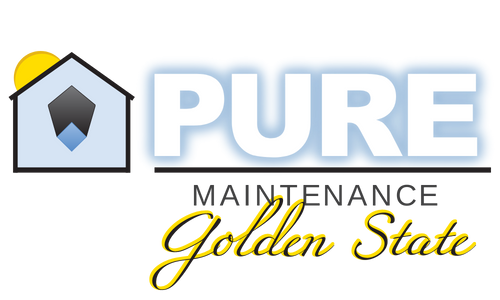.jpeg)
Everyone knows that mold in our living environments does not go down without a fight. We’ve all heard that you shouldn’t try “killing” mold with ready-to-use (RTU) sprays from the local store because mold has the unique quality of resisting attacks by, well, shooting millions of spores out into the air, similar to the quills of a porcupine launching at a predator.
Case and point: I recently spoke with a gentleman who had some black-looking mold on the wall in one of his rooms, which had been wiped down and scrubbed off. Unsurprisingly, an air quality test revealed the presence of Stachybotrys – the official name for black mold.
Mold Loves Human Bodies
Given mold’s resilience, it is no wonder our bodies struggle to fight it off. Our bodies are well suited to heal themselves and even detox from the various harmful substances and particles we encounter and ingest. The liver, kidneys, lungs, and skin all execute different detoxing mechanisms. The lymph and intestinal systems do wonders at extracting the harmful. Yet mold often finds a way to wreak havoc on our bodies despite our natural detoxing systems. It seems that the natural antibodies serve as the signal to the mold that it’s under attack and needs to unload even more spores to save itself.
This problem within the body amplifies when we remember that water is a crucial requirement for mold reproduction, and our bodies are 60% water. Furthermore, some of the body’s most vital organs contain well over the body’s average water composition: the brain and heart are 73% water; the lungs 83%; muscles and kidneys sit at 79%.
Mold only demands two other ingredients to facilitate growth and reproduction: oxygen and nutrition. Unless you somehow stop breathing, your body provides an adequate supply of oxygen to the bloodstream and your most vital organs and systems, creating a hospitable environment for mold.
In our outdoor environments, mold finds nutrition in plants and soil. At our home and work facilities, mold targets wood, dust, concrete, sheetrock, and pretty much anything we use to build. In short, It’s not very hard for mold to find nutrition indoors. Within a body, mold will not feed on soil or building materials. Still, it will attempt to consume anything it can find, typically the organic matter that composes each of us.
As long as there is mold, the body is vulnerable
Kind of a grim outlook, right? Well, our bodies still do quite well despite their vulnerability to mold. Success at withstanding mold’s adverse health effects is mostly contingent on one crucial factor: Our bodies must stop ingesting high doses of mold spores and their mycotoxin companions from our environment.
Our bodies can continue to use their natural processes to detox and flush and cleanse all day long, but it does no good if we remain in environments saturated with high counts of mold and mycotoxins. As such, removing the cause of mold-related health problems from one’s home is the first step in any remedial therapy, detoxing, and healing. Any healing modality will fall short if the body is continually fighting against a moldy living environment.
Some Solutions
The good news is there is a remedy. In my experience, there are only two ways to solve the dilemma of living in moldy environments: 1) Move, or 2) Get the mold remediated in a manner that addresses the whole health of the home.
Most of us do not want to move into a different home solely to avoid mold, nor do we want the headaches that accompany such an endeavor. That leaves the second option.
I am careful with my wording because, as intuitive as it sounds, it is easy to focus on the visible mold colonies in a single part of the house, such as the bathroom or basement, and forgo the overall air quality and home’s health.
I can’t tell you how many homes I’ve been to with an undetermined and unresolved source of some musty smell. Perhaps, little drips and spills accumulated over the years, resulting in an off odor. Maybe a flood lingered too long, and the mold and musty smell took up residence in the carpets and furniture. Or perhaps the HVAC units and vents silently collect and distribute mold spores throughout the home.
A Case Study
In another example, a homeowner hired a mold remediator to rip out some black mold in her master bathroom. Even after the remediation, she continued to wake up around 3 AM every morning with a migraine. So she convinced her insurance company to cover Pure Maintenance’s full house treatment.
We purged her home of the mold and mycotoxins in every room in the house, the HVAC and vents, and the typical mold hotspots such as window seals, drain, sink overflows, housing for the jacuzzi tub, and more. Last we spoke, some two months after her treatment, she mentioned that her morning migraines completely stopped within a few days of the treatment, and her daytime migraines reduced by two-thirds!
Conclusion
Mold and mycotoxins are hard on our bodies. The healing journey can be long and challenging, especially with long-term exposure to moldy environments. Fortunately, an increasing number of health practitioners throughout the country understand how to address mold-related illnesses. We support and cheer on these professionals in their valuable work.
In some cases, restoring a home to healthy levels and creating an environment in which the body can detox is all one needs for mold-related health concerns. In other cases, it’s only the first step to better health. Whatever the case, we look forward to joining the mold fighting community and continuing to provide cleaner indoor air for all of us to breathe.
This blog was first published on the Pure Maintenance Corporate Website on 11 August 2020 and has been edited for clarity and length by Pure Maintenance Golden State.
